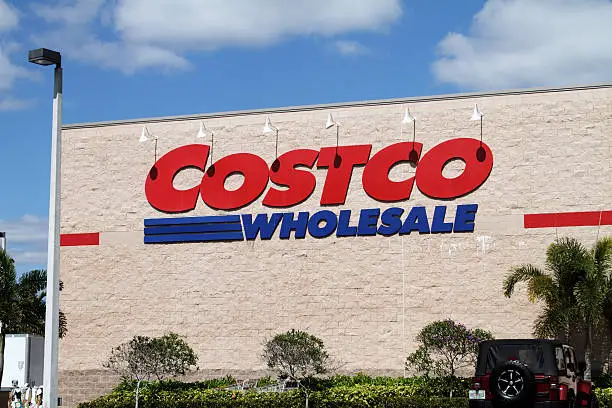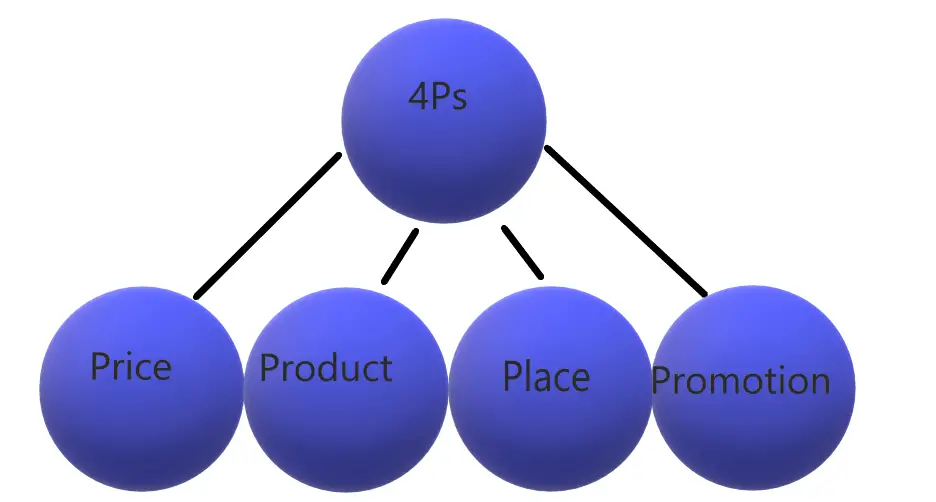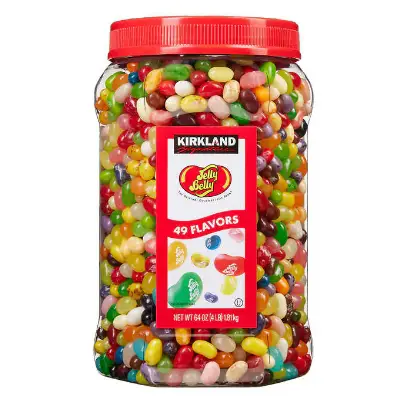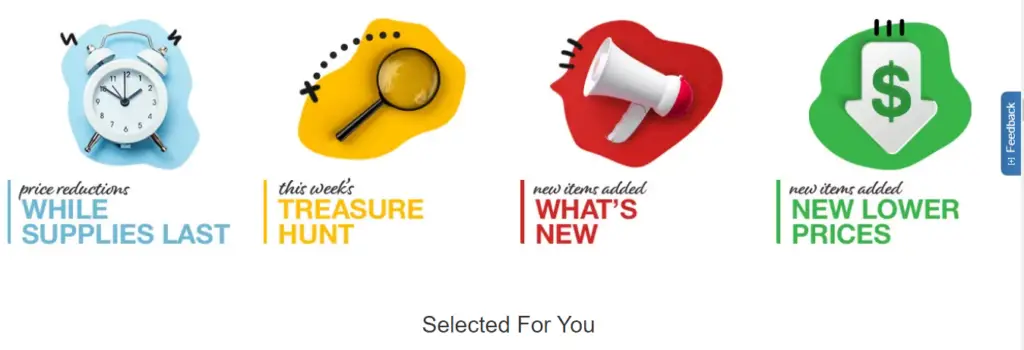The brand positioning of Costco is one of the many factors that distinguishes the company from other warehouse clubs in the geographical areas where it operates. This includes the consumer’s perception of Costco as well as the marketing strategies employed by the business to stay relevant and attract more customers.
Costco Wholesale Corporation which is commonly shortened and referred to as Costco was founded in 1983 by Jim Sinegal and Jeffrey H. Brotman. Before this, however, the business model that underlined Costco’s operation had been established in 1976 when Sol Price and his son, Robert opened Price Club.
These companies operated retail stores that required paid memberships from individuals or small business owners before they could shop with them. Based on their similar business models, Costco and Price Club merged in 1993 to become PriceCostco; the merger increased the brand’s stores to 206 stores and widened its consumer base. Thus, increasing its market share as well as its annual revenue.
After the Prices exited the company in 1994 to form another company, PriceCostco was rebranded back to Costco; this has remained so to date. Currently, in 2023, the brand has a worldwide workforce of over 310,000 part-time and full-time workers and 862 warehouses scattered across the United States, Mexico, Canada, Puerto Rico, and Japan.
Before we delve deeper into discussing Costco’s positioning and marketing strategies, let us define brand positioning.
Read about: Subway Positioning and Marketing Strategies
What is brand positioning?
Brand positioning can be defined as the unique value presented by a product manufacturer or service provider to its target market. Business corporations often use their brand positioning to emphasize the characteristic features of their products or services.
Through brand positioning, companies aim to make customers create associations between their brand and its value proposition. For instance, once the name Costco is mentioned, most consumers will think of large warehouses and bulk purchases at unbeatable prices.

Brand positioning plays a pivotal role in the success or failure of a business; when a brand position’s well, it could lead to tremendous success whereas a failure to do so effectively may ultimately lead to the brand’s failure.
According to Hubspot, brands that are consistently presented see an average revenue increase of 10-20%. Hence, brand positioning begets several benefits including improving the brand’s image, increasing customer loyalty, and differentiating a company from its competitors.
Read about: Tim Hortons Marketing Strategies
What is the strategic positioning of Costco?
The strategic positioning of Costco is the sale of high-quality products at cheaper rates when compared to other retailers. Costco has been able to achieve this strategic positioning due to its bulk sale of products and marginal mark-up percentage in pricing.
Read about: Lululemon Marketing Strategies and Marketing Mix
Costco’s positioning using the marketing mix
- Product
- Price
- Place
- Promotion
The marketing mix is commonly referred to as the four P’s of marketing. The 4Ps constitute the key elements considered by a company when developing its marketing blueprint. Generally, a marketing mix is focused on promoting a product or service with the aim of generating revenue for the producer of the good or service provider.
By paying attention to its marketing mix, Costco has been able to maximize its positioning in the market which has led to its having a customer base of 127.9 million cardholders as of 2023.

Product
The products sold at Costco Warehouse clubs worldwide are the foundation upon which the other 4P’s in its marketing mix rest. This is because, without a product, there will be nothing to price or promote.
Costco products include those from the company’s private label, Kirkland Signature as well as other national, regional, and local brands such as Huggies, Duracell, Diamond Pet Foods, and Starbucks. Costco products are spread across 6 broad categories including:
- Appliances such as air heating and cooling systems, dishwashers, refrigerators, washing machines, and other large appliances.
- Essentials such as groceries, supplements, apparel, and baby products.
- Office and janitorial supplies.
- Furniture such as sectional sofas, gazebos, mattresses, and patios.
- Restaurant supplies and equipment.
- Electronics such as televisions, audio devices, computers, and other electronic items.
Unlike other retailers that carry as many as 30,000 stock-keeping units (SKUs), the brand typically carries around 4,000 SKUs. This limited number of SKUs has positioned Costco as a provider of high-quality products that are carefully curated to meet consumer needs.
Apart from these products, Costco also provides ancillary services such as gas stations, optical dispensing center, pharmacies, hearing aid centers, food courts, and tire installation. They also operate a travel division that provides consumers with travel items, car rentals, and accommodation. They also organize cruises, vacations, and other travel plans for members.
Price
Costco’s pricing serves as a great competitive advantage for the brand. The warehouse club utilizes one of the pricing strategies known as mark-up pricing which involves adding a specified percentage to the cost of production to arrive at the selling price.
Costco marks up its products at 14-15% of the cost of production or purchase. This relatively low price mark-up percentage ensures that the prices of goods at the brand’s warehouses are significantly cheaper when compared to other retailers. Hence, it serves as one of the strategic positioning tools used by Costco.
Place
Costco started out with just one warehouse in Seattle, but, the brand has shown its ability to strategically position itself in the industry since its 1993 merger with Price Club.
Since then, the brand has pursued an active expansion strategy which has currently placed it as a global warehouse club with over 860 warehouses.
Aside from its physical locations in over 14 countries, the brand has a robust website where consumers can enjoy a seamless shopping experience. Additionally, some products that may be unavailable in the brand’s warehouse can be purchased through its website.
Promotion
After having a product and choosing the right price and place for its sale, promotion is the last step in the marketing mix that can help a brand position itself more effectively in the market.
For Costco, the brand is highly reliant on its consumer satisfaction to drive sales. This means the brand puts in extra effort to ensure that they meet and even exceed their member’s expectations by providing them with products at highly competitive prices when compared to other companies.
While other retailers spend millions of dollars on product or service promotion campaigns and use various media such as television, radio, and SMS marketing to advertise their products, Costco depends on the marketing emails it sends to members who opt-in when they register as well as the word-of-mouth marketing done by its members when they talk to others about the benefits of being members of the warehouse club.
Since the brand’s inception, this tactic has served as an effective promotion tool. This is because it serves the dual purpose of keeping the brand’s consumers and employees talking about the value propositions of Costco as well as keeping a lean overhead cost due to the zero marketing budget.
Read about: Digital and Physical Marketing Examples and Differences
What is the value proposition of Costco?
The value proposition of a brand is the reason why a customer would prefer that particular brand over other available options. Costco’s value proposition is three-fold: buying more products at a cheaper rate, the quality of products, and the wide range of product categories available.
Costco’s inclusion of ancillary services for its members also adds to its value propositions. The brand has been able to maintain this value proposition and its position in the retail industry for decades due to several factors including:
- The brand’s implementation of vertical integration in its business.
- It has high purchasing power.
- Access to certain regional and local exclusive products.
- The effective supply chain of Costco.
- Bulk purchases by members.
- Lean overhead cost.
Read about: Demographic Marketing Definition and Importance
Costco marketing strategies
- Bulk packaging and pricing
- Global expansion
- Club membership
- Co-branding and partnerships
- Excellent customer service and rewards
- Limited stock-keeping units
- Brand recognition
- Online and time-bound offers
Bulk packaging and pricing
The whole business model of Costco is hinged on its bulk sale of products to consumers at deeply discounted rates. This has served as Costco’s major marketing strategy since its inception.
Usually, the products sold at Costco warehouses come in bulk packages such that instead of purchasing a single product, one will have to buy either 2, 3, 4, or some other multiples. This is so because the brand does not repackage the products it sells, instead, products are sold off directly from the manufacturer pallets.
The grouped packaging of products conveys the marketing message of bulk buying to consumers. It is therefore not uncommon to see shoppers get a pack of 5 toothpastes at Costco instead of buying only one if they were shopping elsewhere.
Another contributor to this bulk buying is the pricing strategy that the company employs. For instance, if a single pack of macaroni costs $5, a Costco warehouse may sell 5 packs for $22. This type of discounted pricing further encourages consumers to buy more.
As a result of bulk packaging and discounted pricing, a study done in 2021 by Numerator & ndash for the Business Insider Africa asserted that people generally spent more at a Costco warehouse than if they were shopping in a regular supermarket.
This goes to show that bulk packaging and discounted pricing are effective marketing strategies that have succeded in driving up the brand’s revenue.
Global expansion
The National Retail Federation (NRF) ranks Costco as the second-largest retailer in the world in 2023. This can be attributed to the company’s expansion and setting up of warehouses outside of the United States where it began in 1983.
Between that time and now in 2023, the brand has pursued a steady expansion to several parts of the world including the United Kingdom, Australia, China, Taiwan, New Zealand, and France.
The steady and measured expansion has served as a key marketing strategy for the brand as it usually announces new store openings ahead of time. This is done to attract individuals and encourage them to become registered members of the warehouse club ahead of the opening of a warehouse near their location.
For instance, when the first Costco warehouse was opened in China in 2019, a massive crowd came out to shop. This shows that the brand’s global expansion has been an effective marketing tool in getting more people across the globe to become the warehouse club’s members.
Club membership
Unlike other retailers that depend on walk-in customers, Costco’s business model of being a member-only warehouse club is another marketing strategy that has aided the brand’s positioning.
Individuals who want to shop at the warehouse club must register as members because a membership card serves as the gate pass for entering and shopping at Costco.
The club membership creates a sense of exclusivity for its members. It is another unique selling point for effectively marketing the brand to people who would rather shop in a place that is not open to just anyone.
Aside from serving as a perfect marketing tool for the business, the membership fees are also a significant source of revenue for the brand and add to its overall purchasing power as well as its profit margins.
Co-branding and partnerships
Another marketing strategy that Costco utilizes is the use of co-branding and partnerships to expand its reach. This provides an opportunity for individuals and groups that did not previously recognize Costco to become aware of it.
One way that Costco has used partnership and co-branding to market itself is by partnering with credit card providers such as CIBC Mastercard and Citigroup.
The credit cards issued through these partnerships are usually co-branded and could serve as an alternate membership card for its holder. Hence, a cardholder gains access to shop at a Costco warehouse club.
These partnerships additionally mean that transaction costs are also reduced as that is one of the major reasons that the brand considers when partnering with credit card companies.

As a means of boosting consumer confidence in its products and increasing its market share, some of the products sold at Costco warehouses carry both the manufacturer’s name as well as the private brand name of the warehouse club.
Common examples of co-branded products that can be found at Costco include those manufactured by Starbucks, Stearns & Foster, Chinet, Keurig Green Mountain, Jelly Belly, and Ocean Spray.
Excellent customer service and rewards
Excellent customer service and rewards are additional marketing strategies utilized by Costco to keep its customers and attract new ones. It is no secret that the foundation of excellent customer service is a satisfied workforce.
The 2023 Forbes’ America’s Best Large Employers ranked Costco at third place in the retail and wholesale category and 25 in the general category. This ranking was based on how willing a company’s employees were to recommend their current employers to friends and family.
The brand has also been recognized for providing several perks to its employees including full health and dental insurance, parental support, educational loans and scholarships, etc.
This adequate compensation and care for its employees has translated to excellent customer service as employees carry out their duties with efficiency thereby enhancing and providing a wholesome consumer experience for the warehouse club members.
The brand also runs a reward program that benefits Executive Members and holders of its co-branded credit cards. Executive members are eligible for a 2% annual cash back on eligible purchases while credit card holders enjoy rewards ranging between 1-4% of their total annual spending on travel, dining, gas, and shopping.
Costco also uses its Member Appreciation Days to reward its customers with special deals and extra discounts as a way of appreciating them for their continued patronage.
All these combine to retain old customers and encourages new one to register so as to enjoy the benefits that come with being part of the warehouse club members. Thus the excellent customer service and rewards programs of Costco is an effective marketing strategy.
Limited stock-keeping units
Costco’s marketing strategies also include its limited stock-keeping units (SKUs). While other retailers struggle to bring the latest and newest brands to their shelves, Costco maintains about 4,000 SKUs per time in its warehouses.
The limited SKU is an effective marketing strategy that can attract new members to the warehouse club because the brand has exclusive partnerships with some of the brands. Thus, certain products can only be purchased from a Costco warehouse.
This creates a sense of exclusivity for the brand’s consumers which fosters customer loyalty. It also encourages non-members to register so that they can also have access to the exclusive products.
Additionally, the limited SKUs enable the brand to better control what is sold in its warehouse. Quality control and monitoring are better carried out to ensure that only the best products get sold to members. This, together with the cheap pricing of products serves as a good marketing strategy.
Brand recognition
Costco has been named the 7th World’s Most Admired Company in 2023. This indicates that the brand is well-recognized across the globe. Hence, Costco’s global brand recognition is one of the marketing strategies the brand has deployed.
A visit to any grocery store will usually result in seeing a wide variety of products under several brand names, however, in a bid to enhance its brand recognition and maintain its positioning as a leader in the retail industry, Costco implements uniform branding for all its private label products.
This means that instead of having different names for different product categories, Costco has adopted a single brand name, Kirkland Signature for all its private label products irrespective of the product category.
The adoption of the Kirkland Signature brand name in 1995 has been a strategic marketing tactic that has aided in the differentiation and easier recognition of Costco products in the market.
Costco’s positioning as a provider of high-quality products at affordable rates is further enhanced through the Kirkland brand. Common products made under the brand name include pet food and supplies, kitchen utensils, baby care products, clothes, organic foods, and groceries.
Online and time-bound offers
Costco is one of the brands that has invested heavily in technology to not only enhance member experiences across all its digital channels but also create special offers that keep customers coming back to its website or mobile app.
Every week, the brand makes certain products available to members through the weekly treasure hunt on its website. There are also offers specially set up for some products while they are still available.

Additionally, seasonal offers are also made especially for fresh produce which are only available during certain seasons. Some products are also available exclusively online and cannot be purchased at the warehouses.
These exclusive online and time-bound offers which Costco offers is another means of marketing the brand’s products and also encouraging its customers to take advantage of the available offers within the stipulated period it is available.
Read about: Societal marketing definition and examples
Conclusion
Costco’s positioning in the retail industry is hinged on the brand’s provision of high-quality products at unbeatable low rates when compared to other retailers.
By deploying certain marketing strategies such as ensuring that only club members can shop at the warehouse, limiting the products it sells, bulk packaging, and online and time-bound offers, alongside its marketing mix; Costco has been able to increase the level of its brand recognition, build consumer loyalty, increase sales, and boast the brand’s overall profitability.
Costco’s current position as the second-largest retailer in the world shows that its positioning and marketing strategies have continued to yield good results over the years.
Last Updated on November 2, 2023 by Nansel Nanzip BongdapBlessing's experience lies in business, finance, literature, and marketing. She enjoys writing or editing in these fields, reflecting her experiences and expertise in all the content that she writes.

